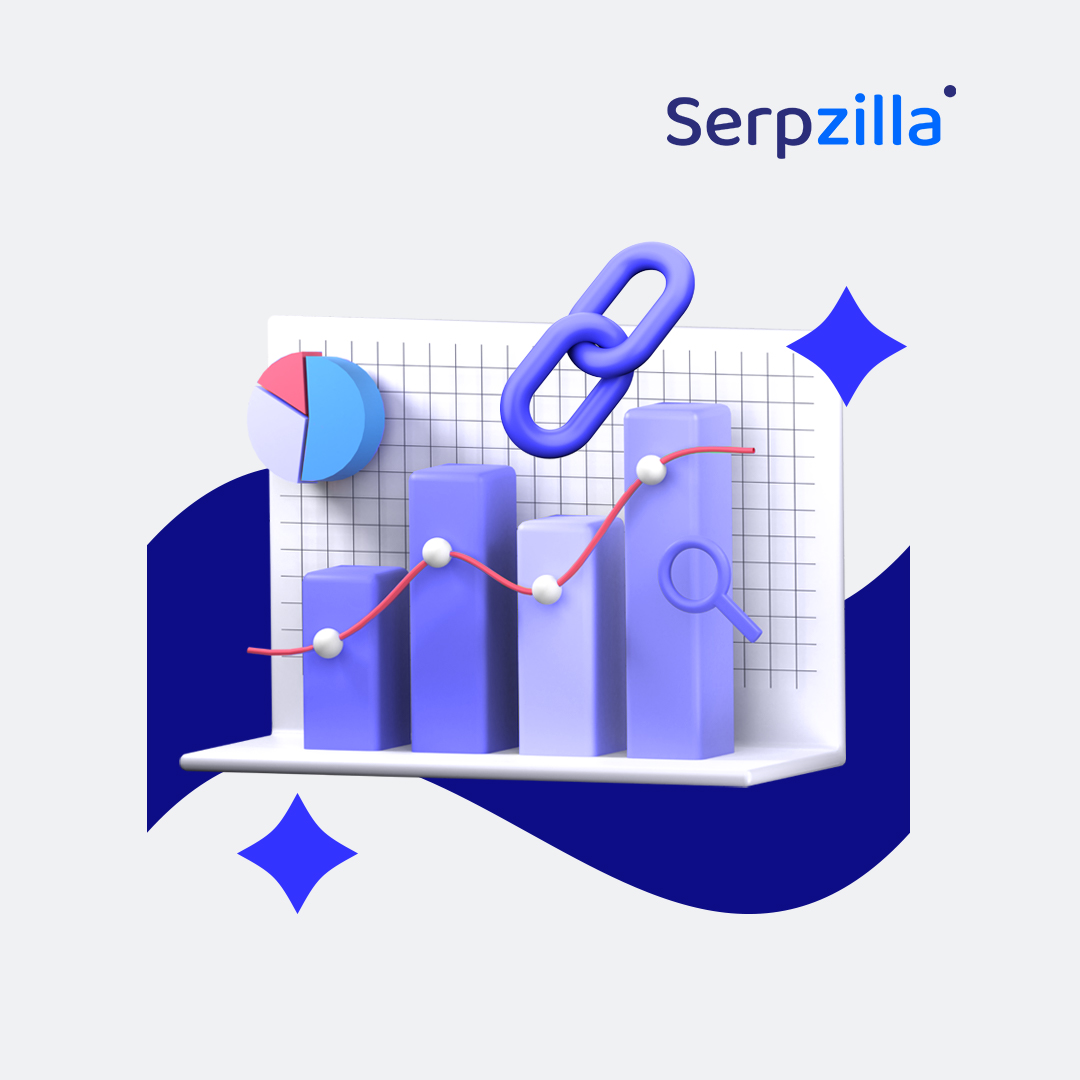Natural backlinks are the inbound links on your blog or website, gained without actually creating them actively or passively. They are often from a related or contextual external website, which found your content worthy to be attributed.
In simple words, these organic or editorial links are gained without you having to approach or persuade webmasters, editors or following any black hat/unnatural processes.
What Is The Importance Of Building Natural Backlinks?
According Ahrefs:
- Most top ranking pages get followed backlinks from new websites.
- The more backlinks a page has, the more organic traffic it gets from Google.
Clearly, natural link building is favored by search engines and is popular among webmasters and bloggers to enhance their website’s SEO. It is a process agnostic of Google algorithms or ranking factors.
Some of the benefits that natural backlink building brings to the table include but are not limited to:
- Builds Authority and Trust – Search engines take backlinks as a proof of trust. The natural backlinks add credibility to your website or blog.
- Provides Referrral Traffic and Ranking – Going beyond SEO, getting a backlink from a high domain authority or a high-traffic website is a sure-shot boost in your referral traffic. It’s a given that your ranking in SERPs will also go up.
- Enhances Visibility – With your website getting mentioned and linked to, the brand becomes more visible online. This is a great way to build brand authority within your niche or industry.
How Search Engines Evaluate Backlink Quality
Obtaining quality backlinks isn’t a cookie cutter method. This is because Google consistently updates its algorithms. The rule of thumb is to stay updated on the latest SEO trends on the market and use them to carefully strategize your link building tactics. That being said, here are some of the most critical pointers that Google takes into account when it comes to assessing the quality of your backlinks:
- The Relevance or Context: Backlinks may be relevant in various ways, whether it’s domain to domain, page to page, domain to page, or link to page. For instance, a finance website linking to a gaming website is a complete mismatch and irrelevant.
- The Domain Authority: Google’s search algorithm tilts towards delivering authoritative and pertinent search results. As a website or blog owner, it’s imperative to secure links from high-authority websites. This sends a signal to Google that your content is valuable to the readers or site visitors and also helps pass more link juice to your website.
- The Position Of Link On Page: The placement of the link also matters in SEO. Any backlink that is placed within your main content is going to be more valuable than those in the sidebar or the footer.
- The Website Diversity: Search engines favor backlink profiles that develop naturally over time. These profiles encompass sites that accumulate incoming links from authoritative blogs, websites, magazines, directories, press releases, and conferences. This is an indication that your content finds favor in various places of relevant context.
- The Human Value: Google assesses your content’s value in addressing search queries. To ensure you’re addressing user needs, scrutinize the linking site’s audience. If a site owner links to your website even when it’s unrelated to their target audience, that’s a red flag. Always remember to keep the content as human-centric and focused on your target readers as possible.
- The Uniqueness: Backlinks from authoritative sites exclusively discussing your content, not your competitors, offer exceptional opportunities. Unique platforms like conferences and forums, where not all competitors can showcase their content, are perfect for building high-quality backlinks.
- The Link Location: Google prioritizes search intent. Links seamlessly integrated throughout content carry more weight. In contrast, irrelevant links in sidebars or footers are viewed unfavorably.
- Link Frequency: The rate at which you gain backlinks is also an important aspect. A sudden spike in new backlinks is suspicious unless there’s a valid reason such as the content going viral.
- Number of Links on the Linking Page: Suppose your website or blog links out to too many websites, the value of each outbound link can be diluted.
- Organic vs. Paid Links: Search engines prioritize organic backlinks over those you’ve paid for. Paid links, unless clearly disclosed, can lead to penalties.
In addition to these, here are some technical aspect that also determine how search engines such as Google decipher the link relevance and authority:
• Nofollow: Links with the “nofollow” attribute may not carry the same weight for SEO as links with a dofollow attribute.
• Redirects: Redirected links can influence how link authority is passed.
• Alt Attribute: The use of alt attributes in image links can impact accessibility and relevance.
• Anchor Text: The text used for hyperlinking is scrutinized for relevance and keyword usage.
• Robots.txt: The presence of robots.txt files can affect which pages are crawled and linked.
Natural vs. Unnatural Backlinks
Put simply, natural links are the ones that generally direct users to the correct information. Say there’s a post on Dog Collars on a site and a link in the blog is placed on that keyword, directing the users to the subject. This is an editorial link and is an apt example of a natural backlink. On the contrary, unnatural backlinks are the ones that try and manipulate a page’s ranking.
| Natural Backlinks | Unnatural Backlinks | |
| Definition | Earned when others link to your website or blog content willingly | Acquired intentionally via various black hat or unnatural tactics to manipulate rankings |
| Acquisition | Organic, via content quality or viral campaigns | Through buying links, schemes, or automation |
| Value in SEO | Highly valued, boosts authority and rankings | May offer short-term gains but risky in long run |
| Examples | Blogger embedding your content for credit such as an industry statistic | Paying for links, using spammy comments, misleading links on irrelevant keyword |
| Risks | Virtually risk-free, genuine appreciation | Significant risks, penalties, reputation loss |
| Detection | Diverse anchor texts, relevant sources, time span | Patterns like repetitive text, low-quality sites |
| Response to Updates | Remains beneficial, usually unaffected | Often targeted by algorithm updates, penalties |
Types of Natural Backlinks
Distinguishing between various natural backlink types can help webmasters and SEO professionals in assessing the effectiveness of their content and strategies in attracting genuine, organic links. Here’s a sneak peek into some prevalent forms of natural backlinks:
1. Editorial Backlinks: Earned when a website references your content as a credible source, informative, or share-worthy.
Example: A reputable industry blog on a website like Forbes or Entrepreneur.com cites your research in their monthly thought leadership column.
2. Guest Blogging Backlinks: Done genuinely and without the sole aim of obtaining links, guest blogging can result in natural backlinks.
Example: You contribute a valuable article to a leading industry publication, and they allow you to include a link back to your site in the author bio or content. This can be a statistic that’s pivotal to the entire blog or a quote from your existing content.
3. Business Profile Backlinks: Links stemming from legitimate business directories or profiles where you list your business details.
Example: A link from your company’s LinkedIn page is an apt example.
4. Community and Forum Backlinks: Members of forums or online communities link to your content because they find it valuable or relevant to ongoing discussions.
Example: Someone on Reddit shares your article in response to a question about the topic you’ve covered.
5. Infographic Backlinks: Compelling infographics you create may be embedded in the content of other websites or blogs, providing you with natural backlinks.
Example: A food blog uses your infographic on global coffee consumption in one of their articles.
6. Backlinks from Reviews: Satisfied customers or industry experts may review your product or service and include links back to your website.
Example: A food blogger or reviewer links to your page after providing a positive review.
7. Mention Without Links: While not a conventional backlink, brand or content mentions hold value, particularly if they drive readers to search for your content.
Example: A major news outlet mentions your study without linking to it, prompting readers to search for your study and generating organic traffic.
8. Educational and Governmental Backlinks: Links from educational (.edu) or governmental (.gov) domains, renowned for their authority.
Example: A leading university cites your blog in their research paper or your site get mentioned in their online newsletter.
How to Get Natural Backlinks: Practical Steps
The need of the hour to generate natural backlinks is to focus on creating valuable content that others in your industry or niche will find useful. For this purpose, you can use several strategies, mostly related to what content you’re using and how.
Here are some practical methods to lead the way:
- Publish “Skyscraper” Content: Identify popular content in your niche and create something better. For instance, if there’s a widely-shared list of “10 Productivity Apps,” you can create a “Top 20 Productivity Apps” post with more in-depth reviews and helpful insights.
- Become a Source for Reporters and Bloggers: Position yourself as an industry expert by offering insights, quotes, or interviews to reporters and bloggers. When your contributions are used, they often link back to your website. For example, if you’re a cybersecurity expert, offering insights on a major data breach can lead to backlinks from news articles and blogs.
- Build Links From Outdated Resources: Find outdated content with broken links and offer your updated, relevant content as a replacement. This way, webmasters are more likely to link to your fresh material. For example, if you find an outdated guide on “SEO best practices,” you can contact the site owner and suggest they replace it with your updated version.
- Use Content Formats Proven to Generate Links: Some content formats naturally attract more backlinks, such as infographics, resource lists, or case studies. For instance, creating an infographic about “The Evolution of Mobile Phones” can attract links from technology blogs and websites.
- Provide Testimonials: If you use a product or service related to your industry, offer a testimonial. Companies often feature these on their websites with backlinks to your site. For example, if you’re a web designer, you can provide a testimonial for a project management tool you use, which includes a link back to your site.
- Look for Relevant Listicles: Identify list articles (listicles) in your niche and reach out to authors, suggesting that your content be included in the list. For instance, if there’s a listicle about “Top 10 Travel Blogs,” you can ask to be added to the list if you run a prominent travel blog.
- Improve on Popular Content: Identify popular content in your field and create a more comprehensive or up-to-date version. For instance, if there’s a widely-read article about “Digital Marketing Trends for 2023,” you can create an article for “Digital Marketing Trends for 2024” and pitch it to bloggers and websites who linked to the previous article.
- Publish Ultimate Guides: Create comprehensive, well-researched guides on topics within your industry or niche. These guides are often linked to as go-to resources. For example, if you’re in the fitness industry, a guide like “The Ultimate Nutrition Guide for Athletes” could become a valuable resource and attract backlinks.
- Use Branded Strategies and Techniques: Develop unique strategies or techniques in your industry, and brand them. Over time, these strategies can become associated with your brand and attract backlinks. For instance, a marketing agency could introduce a unique “Rocket Launch Method” and receive backlinks when people refer to it.
- Authority Resource Pages: Seek out and get featured on authority resource pages in your niche. For instance, if you’re in the web design industry, being listed on a resource page titled “Top Web Designers of 2023” can result in valuable backlinks.
- Get Featured on Resource Pages: Identify resource pages that relate to your content and reach out to site owners for inclusion. If you have a blog post about “Social Media Marketing Tools,” you can ask to be featured on resource pages dedicated to marketing tools.
- Create Linkable Assets: Develop content that serves as a valuable reference or tool, like a free SEO audit tool, interactive maps, or calculators. When others find these tools useful, they are more likely to link back to your website.
- Find Broken Links: Use tools to discover broken links on relevant websites, and then suggest your content as a replacement. This tactic can result in easy backlinks. If a blog post about “10 Essential Cooking Tips” has a broken link to a kitchen equipment review, you can offer your updated review.
- Check Competitors’ Links: Analyze your competitors’ backlinks and identify opportunities to replicate or acquire similar links. If a competitor in the e-commerce industry has a link from a popular review site, you can approach the same site with your product for review.
Natural Link Building Services
Boost your SEO results! Link building has become fast and easy with Serpzilla. Buy quality backlinks on authority websites with high DR.

Easier said than done, building natural links takes a lot of efforts. The good news is that there are several ways to get this done, including using various tools or online services.
At Serpzilla, we offer a comprehensive link-building solutions tailored to modern SEO needs. Our platform stands out for its user-friendly interface, extensive database of potential backlink opportunities, and real-time monitoring features. It helps boost your link building game like never before owing to benefits like –
- Targeted Outreach: Using advanced algorithms, Serpzilla identifies high-quality, niche-relevant link opportunities, streamlining the outreach process.
- Monitoring & Reporting: Track the health and performance of your backlinks in real-time. The platform also provides insightful reports that aid in refining strategies.
- Link Profile Analysis: Assess the quality and relevance of your existing backlinks, ensuring alignment with best practices.
Competitor Analysis: Gain insights into competitors’ backlink profiles, identifying potential opportunities and understanding industry benchmarks.
Some other tools that you can use in addition to Serpzilla are:
- Moz Link Explorer – Provides insights into your backlink profile, highlighting the domain authority of linking pages and potential issues.
- Ahrefs – Quite popular for offering an extensive database of live backlinks and to get notified for new or lost backlinks.
- SEMrush – Offers great insights into link building, including competitors’ backlink strategies.
What Are The Common Mistakes In Natural Link Building

- Over-Optimization: Excessive use of anchor text with exact-match keywords can raise concern for search engines.
- Ignoring Relevance: Pursuing backlinks from unrelated sites or industries can harm your credibility in the eyes of search engines.
- Neglecting Social Signals: Social media shares and engagement can indirectly impact your backlink profile. Promote your content on relevant social platforms to reach a wider audience.
- Ignoring Broken Links: Finding and offering replacement content for broken links is a missed opportunity for easy, relevant backlinks.
- Failure to Monitor Progress: Regularly assess your link-building efforts to adjust strategies, disavow toxic links, and maintain a healthy backlink profile.
- Lacking Relationship Building: Building relationships within your industry can lead to organic backlinks. Network with peers and influencers.
- Copying Competitors Blindly: Blindly replicating your competitors’ backlink profiles can lead to irrelevant or harmful links. Assess the quality and relevance of each potential link.
- Choosing Quantity Over Quality: Prioritizing a high volume of low-quality backlinks can lead to penalties. Focus on acquiring valuable, authoritative links instead to reap benefits.
- Neglecting Content Quality: Quality content attracts natural backlinks. Without compelling, shareable content, your link-building efforts may fall flat.
- Not Diversifying Strategies: Relying solely on one link-building method can make your profile appear unnatural. Combine strategies like guest posting, outreach, and content marketing and use a healthy content and image mix.
Conclusion
These are some of the mainstays of natural link building. Now you may choose some or all of the methods mentioned to make your mark in the search engine results. The mainstay is to understand the importance, stay relevant, and never give up on the link building efforts. Most importantly, don’t forget to avail the best services that can help you cut down your time and help you achieve the results faster!






